MIUI
Latest

Xiaomi’s new ‘HyperOS’ will power its smartphones and beyond
Xiaomi's new 'HyperOS' will let users, vehicles and smart devices connect with one another seamlessly.
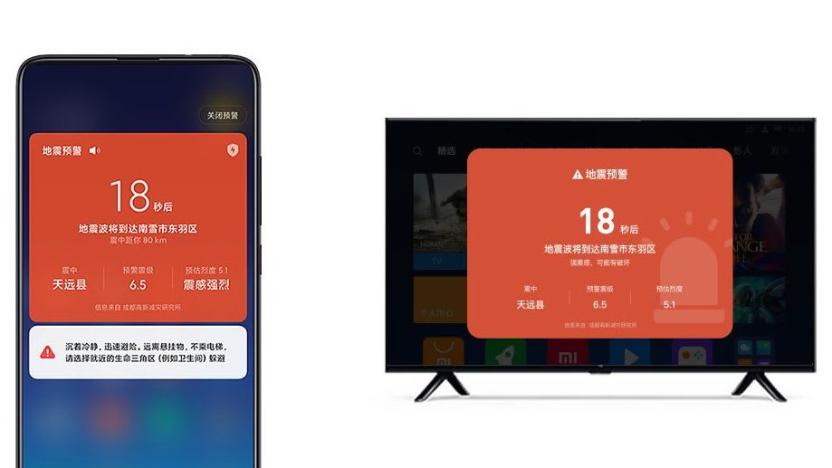
Xiaomi is adding early earthquake warnings to MIUI phones in China (updated)
Xiaomi smartphone and set-top box owners in China will soon have access to potentially life-saving early earthquake warnings right on their devices. At its annual Mi Developer conference in Bejing, the Chinese electronics company said its MIUI 11-based smartphones and Mi TV set-top boxes now include an early earthquake warning feature. Xiaomi claims the system is able to deliver warnings "seconds to tens of seconds" before an earthquake arrives. The company has rolled out the feature in China's Sichuan province first, which is one of the country's more earthquake-prone regions, and plans to make it available to all Chinese users in the future.
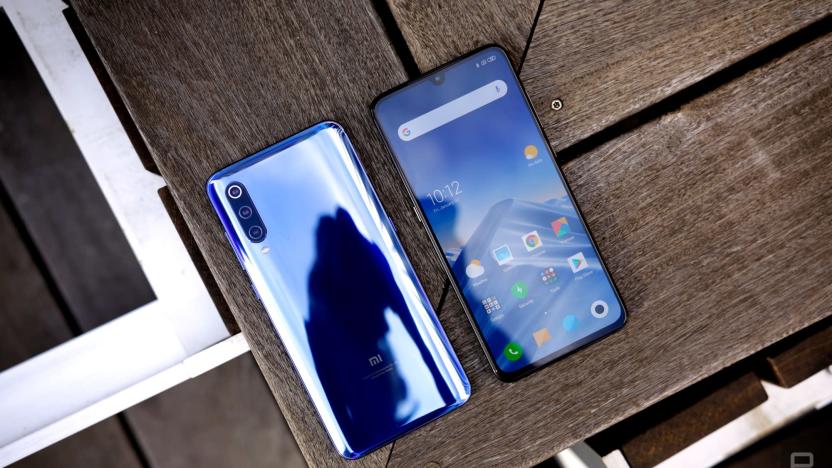
Xiaomi Mi 9 hands-on: Speedy, stylish and a great camera, too
Xiaomi officially pulled back the curtain on its new Mi 9 in China a few hours ago, but a flashy presentation only ever tells you so much. Sure, the top-level stuff seems solid enough: there's a Snapdragon 855 with either 6GB or 12GB of RAM inside, plus a bright and beautiful 6.39-inch AMOLED display running at 2340x1080, all wrapped up in a lovely, curved glass body. But what's it like to actually use? Well, we got the chance to (very briefly) go hands-on with the company's new flagship, and it already seems like the kind of phone I wish would make its way stateside.
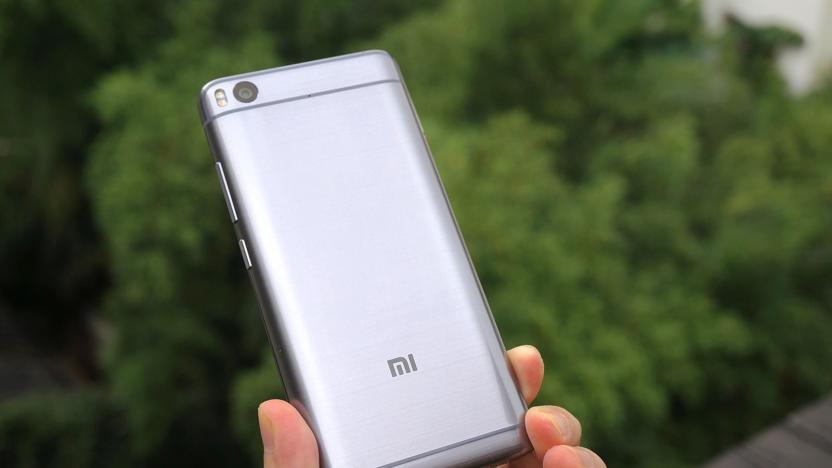
Xiaomi's cheap handsets have ads in the Settings app
How much of a discount would it take for you to accept ads all over your phone? That's the question that Xiaomi seems to be asking its potential customers. A reddit user noticed that the fourth-largest handset maker now has ads displayed everywhere, even within its Settings app. This comes after complaints that the number of ads on the handset had increased within MIUI apps after the installation of the latest software update.

Xiaomi's latest tablet offers LTE on the cheap
Save for the earlier false alarm of Google nixing the tablet section on its website, things have been a little quiet in the Android tablet world. But earlier today, Xiaomi updated its tablet lineup with the Mi Pad 4, an 8-inch, 0.76-pound metallic slate that starts from a mere 1,099 yuan or about $170. Not bad at all for a Qualcomm Snapdragon 660 device with 3GB of LPDDR4x RAM, 32GB of eMMC 5.1 storage, microSD expansion, a 1,920 x 1,200 IPS display and more. For an extra 300 yuan (about $46), you get 4GB of RAM plus twice as much storage; but you might as well throw in another 100 yuan ($15) for the LTE + GPS version. At 1,499 yuan or about $230, the Mi Pad 4 is one of the most affordable LTE tablets coming from a major brand.
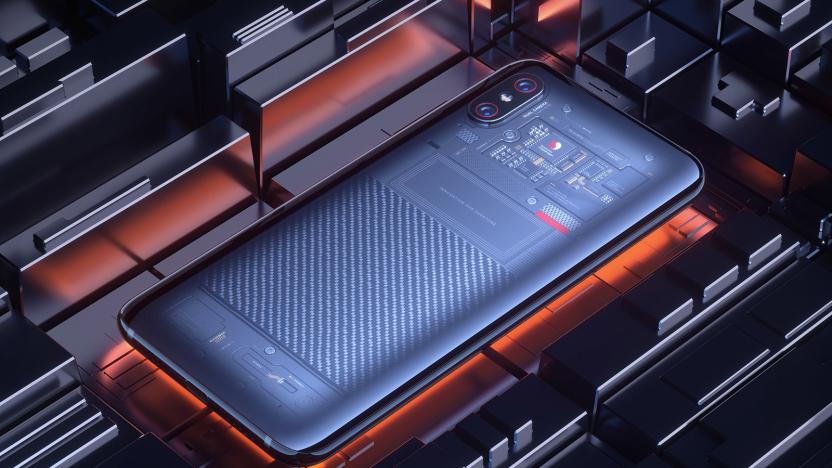
Xiaomi's transparent Mi 8 also does 3D face unlock
Xiaomi may have already released the Mi Mix 2S earlier this year, but it's actually kept its true 2018 flagship, the Mi 8, for marking its eight anniversary -- hence the jump from last year's "Mi 6." As announced in Shenzhen today, the new handset starts at 2,699 yuan (about $420) and comes in a familiar-looking dual-sided glass design, with the most notable difference being the new vertical dual camera -- exactly the same module found on the Mix 2S, according to Xiaomi. And yes, there's a notch, which is for accommodating an infrared front camera for facial recognition, even when in the dark.
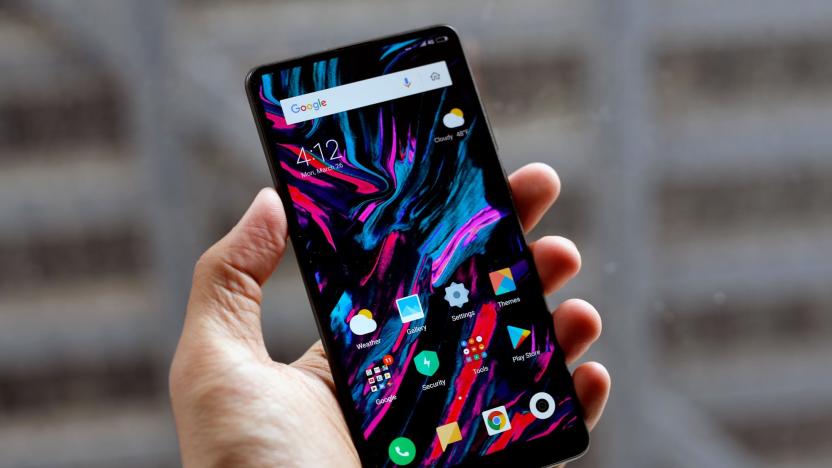
Xiaomi's Mi Mix 2S is a more powerful take on an already beautiful phone
By now, you probably know exactly what to expect from a smartphone sequel with an S in its name: it'll be faster than its predecessor but its design won't change very much. That's not necessarily a bad thing for Xiaomi's newly announced Mi Mix 2S, though. Even if it isn't dramatically different from last year's Mi Mix 2, it still blends excellent performance with sleek ceramic body and impeccable attention to detail. It's just too bad it'll remain a China exclusive for a while.

Xiaomi's Mi MIX 2 comes with a stunning ceramic unibody
For most of us living outside of China, we tend to be limited to two options when it comes to the choice of materials on our phones: either metal or plastic, or a bit of both (and maybe a touch of wood, if you're lucky). While Essential was grabbing headlines with its titanium device, Xiaomi continued tinkering with something that many others dare not touch: ceramics. Following the Mi MIX, the Chinese smartphone maker has once again collaborated with Philippe Starck's design studio to bring us yet another ceramic device with a near-bezel-less display: the Mi MIX 2.
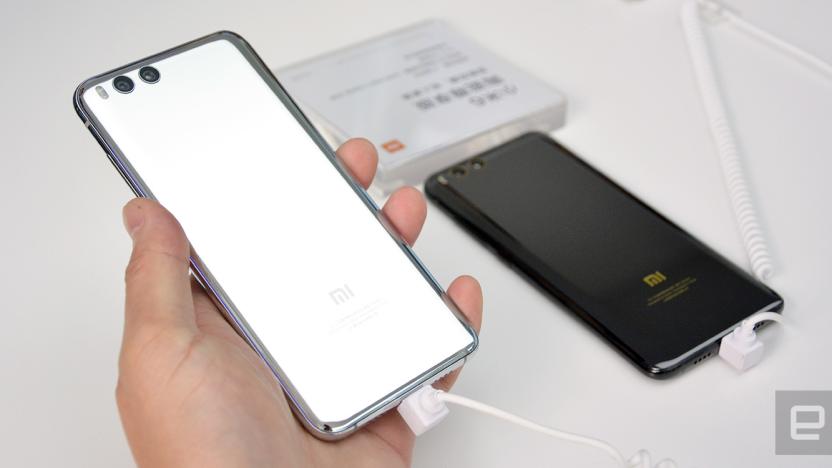
Xiaomi Mi 6 mimics the iPhone's camera tricks without the bump
After the swanky limited edition Mi MIX, you'd think it'd be pretty hard for Xiaomi to top that with its next flagship phone, but the new Mi 6 unveiled today still had some tricks up its sleeve. First off, the company has revived the Mi 5's awesome curved glass back design along with a special ceramic edition, and this time it's complemented by a piece of 2.5D front glass panel plus two new color options: metallic blue and glossy silver. To my surprise, Xiaomi has also gone back to the more expensive stainless steel (as used on the Mi 4) instead of aluminum for the mid-frame: not only is it tougher, but it's also more luxurious with that high-gloss finish -- a much welcomed feature on the blue version's gold-colored frame.
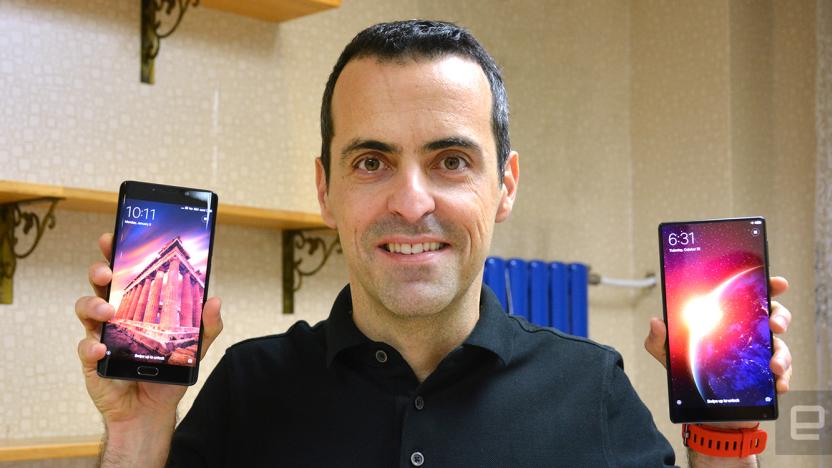
Outside China, Xiaomi seeks another home on US networks
October 9th marked Hugo Barra's third year at Xiaomi, and as its Global Vice President, he watched the company evolve from a China-centric smartphone e-tailer to an IoT ecosystem with a growing international footprint. Xiaomi's recently entered Russia, Mexico and the Middle East, with Poland, Vietnam, Thailand plus a couple other Latin American markets next on the docket. But the long list is still missing one key region: the US. While the ex-Googler continues to stay mum on a launch date, he did reveal to Engadget that his team has already started testing phones in America. Such commitment is an important milestone ahead of the notoriously tough US carrier lab tests.

Up close and personal with Xiaomi's gorgeous Mi 5
After a few minutes playing with Xiaomi's Mi 5, a thought runs through my head: "I really shouldn't be surprised." The company has found enormous success in its native China, to the point that new allotments of phones sell out in minutes. Since Xiaomi phones have virtually no presence in the United States (or the Western Hemisphere, for that matter), my previous experience with them was limited to fits of fondling in Hong Kong phone shops. Xiaomi just held its first European press conference here at Mobile World Congress and brought new Mi 5s to share, and now — finally — I get the appeal.

In China, $100 already gets you a nice metallic smartphone
Why yes, here's yet another dirt cheap Chinese smartphone from none other than Xiaomi. The Redmi 3 is the company's latest budget device that costs just 699 yuan (about $107) off contract, which is pretty good considering it comes with a metallic body, a generous 4,100 mAh battery, infrared remote feature and a secondary Nano SIM slot (can switch to 4G via software) that doubles as a microSD slot (up to 128GB). Impressively, this Android phone is just 144 grams heavy and 8.5mm thick, courtesy of the improved battery density as featured on the Mi 4i.

Xiaomi's global devices to get Opera's data-saving tech
Following yesterday's announcement on Opera Max supporting YouTube and Netflix, today the company revealed that Xiaomi's latest Android fork, MIUI 7, will have the same data-saving technology baked into its Data Saver feature. According to Xiaomi, this can reduce data usage across all apps by up to 50 percent, though encrypted connections are still left untouched. While Data Saver has already been on Xiaomi's China devices for about a year, it'll be a first for global MIUI users, though they'll have to wait for a few more months. That said, other features such as "up to 30 percent faster response time," "10 percent better battery life" and face recognition in photo album will be available right away. All global Xiaomi devices except for Mi Note and Mi Pad can grab the update on August 24th.

Xiaomi's $125 phone has the same heart as HTC's flagship
For those who don't know, Xiaomi has a budget line of smartphones called Redmi, but they've kind of fallen off our radar for some time. That's not the case with the latest model announced today. Following its predecessor, this Redmi Note 2 is sticking with the same 5.5-inch screen size but with a higher resolution of 1080p. What really caught our attention, though, is that despite the phone's $125 base price, it's powered by MediaTek's high-end Helio X10 chipset. That's the same octa-core silicon inside HTC's flagship M9+, which costs almost four times as much as the Redmi.

Hugo Barra on why Xiaomi is against microSD cards in phones
If you were to compare iOS and Android, the latter's storage expansion option via microSD -- up to a whopping 200GB these days -- is often regarded as an advantage, though not all devices come with such offer. For instance, while HTC and LG have made the microSD slot a standard feature on their recent flagship devices, Samsung oddly decided to remove it from its Galaxy S6 series (ironically, the company has just announced new microSD cards). Xiaomi, on the other hand, seems to be on the fence: its flagship line has long ditched the microSD slot after its first-gen device, yet its affordable Redmi line uses said feature as a selling point. It's as if Xiaomi is contradicting itself, but Hugo Barra, the company's Vice President of International, gave us a more definitive answer after launching the Mi 4i in Hong Kong.

Xiaomi's $30 Android streamer looks exactly like a phone charger
In addition to the phablet and headphones announced today, Xiaomi also threw in a little surprise. And by "little" we do mean literally, because this new Mi Box Mini is much smaller than the company's earlier Android streaming devices; it's so small that when it's plugged into the power socket, you'd easily mistake it as a USB phone charger. Despite the reduced size, this Android 4.4.2-powered device still packs a 1.3GHz quad-Cortex-A7 MediaTek processor, along with 1GB of RAM, 4GB of flash storage, dual-band WiFi, Bluetooth 4.0 (for the remote control and other accessories) and support for DTS 2.0 plus Dolby Digital Plus. There's HDMI 1.4a for 1080p 3D video output, but unlike its larger, 4K-enabled sibling, the Mi Box Mini doesn't come with any USB port nor microSD slot, so you'll have to rely on the desktop remote installation software to sideload apps.

Xiaomi mocks Apple with its very own premium phablet
There's just no stopping for the world's most valuable startup. After adding an air purifier, an IP camera, a smart light bulb and the affordable Redmi 2 to its portfolio, Xiaomi is now going right after the iPhone 6 Plus with its very own high-end phablet, the 5.7-inch Mi Note. While kicking off today's keynote, CEO Lei Jun emphasized that his 6.95mm-thick, 161g-heavy phone is ever so slightly slimmer and lighter than Apple's offering. But even without the cheeky comparison, the dual-SIM Mi Note is already impressive enough, given that it's mostly wrapped in Gorilla Glass 3 on both the front ("2.5D" curved) and back ("3D" curved), with an aluminum alloy frame exposed in the middle. Most interestingly, though, is that this CN¥2,299 (about $370) off-contract base price is a tad higher than Xiaomi's usual sub-CN¥2,000 tease, but it'll unlikely deter Xiaomi fans in China.
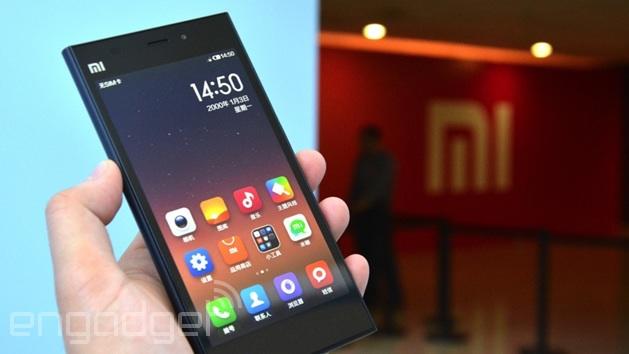
Xiaomi is moving some of its users' data out of China
Xiaomi's a force to be reckoned with in China -- its new phones routinely sell out online in seconds -- but its influence is steadily growing outside its native home. That's why the company's infrastructure has been quietly shifting these past few months, and VP/former Googler Hugo Barra pulled back the curtain on what Xiaomi's been up to. Long story short: it's moving user data around the world, not only to make sure its services work better, but also to better protect its users' information.

Xiaomi issues fix amid privacy scare over its cloud messaging service
Earlier this week, Finland's F-Secure looked into claims that Xiaomi was secretly sending data from its MIUI-powered phones back to its servers, and it turned out to be true. Despite having not added any cloud accounts, F-Secure's brand new Redmi 1s -- Xiaomi's budget smartphone -- still beamed its carrier name, phone number, IMEI (the device identifier) plus numbers from the address book and text messages back to Beijing. Worse yet, the data was unencrypted, thus allowing F-Secure and potentially anyone to, well, get to know your Xiaomi phone very easily. Fortunately, today the Chinese company is issuing a patch to address this booboo.

Xiaomi's latest phone gets a steel frame, IR blaster and top specs for just $320
Having sold 26.11 million phones in the first half of this year, the beast from the East that is Xiaomi is back again with a new flagship Android phone: the Mi 4. For the first time ever, the company is adding a touch of metal -- the common SAE 304 stainless steel, to be exact -- to the phone's frame, which is sandwiched between a flat 5-inch 1080p screen and a swappable, slightly curved plastic back cover. The internal specs are as you'd expect: 2.5GHz quad-core Snapdragon 801 SoC, 3GB of RAM, 16GB/64GB of internal storage, 13MP f/1.8 main camera, 8MP selfie camera, LTE radio (at last), 802.11ac WiFi plus a 3,080mAh battery. As a bonus, you also get an infrared transmitter to play with the TV (which Xiaomi also sells). As usual, the Mi 4 will be very affordable: Just CN¥1,999 or about $320 for the 16GB version, and CN¥2,499 or about $400 for the 64GB version (both off-contract, of course).



